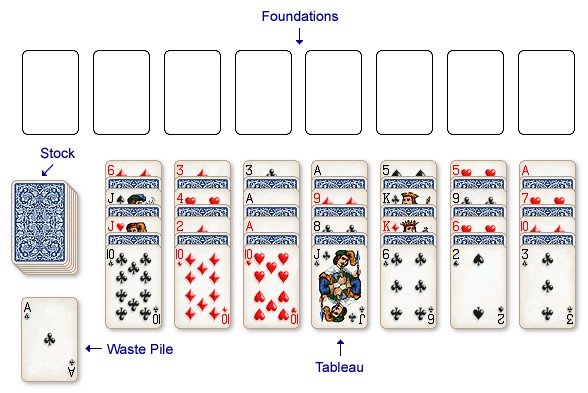How to Play Alternations Solitaire
Card Layout
Two packs of cards are shuffled together and a row of seven cards is dealt face up. A second row of seven cards is then dealt face down, overlapping the first row. A further five rows of seven cards are dealt following the same alternating face-up/face-down pattern. The end result is a tableau consisting of seven columns of seven cards with the first, third, fifth and seventh rows of cards face up and the second, forth and sixth rows face down, as shown in the screen shot below. The remaining cards are placed face down to form the stock. A game of Alternations can then begin.

Objective
The object of the game is to build the eight foundations up in ascending suit sequence from Ace to King. e.g. A, 2, 3, 4, 5, 6, 7, 8, 9, 10, J, Q, K with cards of identical suit.
Alternations Rules
Building occurs on the tableau columns in descending sequences regardless of suit; e.g. any six on any seven. Single exposed cards from a tableau column or packed descending sequences of cards can be used to build on tableau columns if the join follows the descending sequence rule. Packed card sequences can be moved either as complete or partial columns. When the cards blocking a face-down card are removed, it is turned over and becomes available for play. Empty columns created in the tableau may be filled by an exposed card or a full or partial descending sequence of packed cards. When no more building can occur on the tableau or foundations, then cards are turned one at a time from the stock to a waste pile. The top card of the waste pile is available for play at all times. There is no re-deal and the game is over when the stock has been exhausted and the game has blocked.